
- Articles
Anatoliy Golitsyn, James Jesus Angleton, and double agents in the wilderness of mirrors of the Cold War by Miguel A. Faria, MD
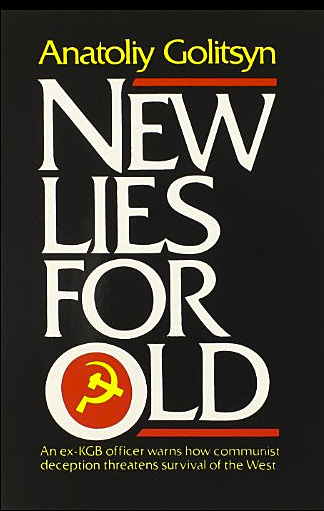
A close friend, with whom I frequently hold discussions on the subject of the Cold War and communism, told me that we are still being deceived by the Russians, that the Cold War is not over, and that “…We have convinced ourselves that ‘communism is in the dustbin of history,’ which is exactly what the Soviets wanted us to think — just as Golitsyn disclosed in his book, New Lies for Old.” Furthermore, he asserts his friend, the author Joseph Douglass, insisted and documented in his book that “the drug trade is directed by the FSB [Russia’s Federal Security Service], which handles more money than the KGB ever had for operations and is larger than the KGB and better entrenched in all aspects of American and European society and government.” Finally, he opined, “The role of the terrorist is to destroy the fighting ability of the United States and its allies and to bankrupt them in their effort to protect themselves from the terrorists. The evidence for this is overwhelming. We have been fooled…”
First, while I agree that the twin evils of socialism and communism are not dead, I believe the fall of the Berlin Wall in 1989 and the collapse of the Soviet communist Empire in 1991 were real pivotal events in history.
Communism, in its most overtly malevolent form, still survives in Cuba and North Korea. Even China, in order to save face with Mao’s legacy of collectivism, still calls itself communist, but is more akin to an economic fascist giant passing as government than anything else.
There is also a crude mixture of socialism and corruption ubiquitous in many third world countries of Africa, Asia, and in a few countries in Latin America, such as Ecuador and Venezuela, where the results have been catastrophic.
But most dangerous and insidious is the seductively gentler form of global socialism conceived in the minds of the elitist global intelligentsia who pull the strings animating the masses. This gentler “socialism with a human face” afflicts the “social(ist) democracies of Europe, Australia, and even insinuates itself in the United States that was once a constitutional republic. This variety is certainly the most dangerous because of the incredible degree of deception affecting the most developed nations of the West, presumably with the best informed, most literate, and most sophisticated populations!
Russia’s Tsarist legacy of autocracy and authoritarianism must not be confused with Soviet-style communism and totalitarianism. Fyodor Dostoevsky spent four years in a forced-labor, prison camp in Siberia, following his conviction for involvement in the Petrashevsky Circle. Those were very difficult years but, ironically, his subsequent years in exile in Siberia were much better. In fact, Dostoyevsky could not muster approval from the Tsar’s (or Czar’s) censors for some of his writings because his description of life in exile was deemed too comfortable and would invite criminals to commit crimes to get there! Compare that to the much worse, Soviet gulag system! Imagine the irony when Dostoyevsky had to edit his manuscript (magnify his discomfort in exile) in order to pass the censors and get published in Tsarist Russia! (House of the Dead (1860-62), semi-autobiographical novel)

Russia’s legacy of submission to arbitrary rule began with her conquest by the Mongol hordes of the 13th century; barbarism followed with Ivan the Terrible, not softening considerably through the centuries even with the much-touted reforms of the over-celebrated Peter the Great. But again, Russian Tsarism should not be confused with Soviet communism.
So it is worth repeating that in Russia today the pre-1991, Soviet-style communism is dead as it is in Central and Eastern Europe.
Admittedly, there is much truth in what my very knowledgeable friend said. During the Cold War, there was evidence the drug trade was in part handled by communist intelligence services of various countries, intending to use it to subvert the West, as well as to make profits to carry out further subversion. Certainly this was true of the Soviet KGB and the Cuban DGI, working through third countries such as Colombia and Panama. I have read and cited Joseph Douglass’ book, Red Cocaine, in some of my articles. The Russian FSB today, like the old Soviet KGB, remains formidable. And if some Americans in high places have been fooled, particularly in government circles, it has been by either their arrogant ignorance, their desire to be fooled because of their concordant treasonous ideology, or because of venal financial gain. One person that satisfied the latter two conditions, for example, was the late business entrepreneur Armand Hammer, as recounted in the monumental biography by Edward J. Epstein.
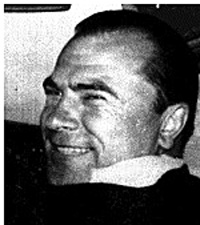
Now, let’s say a few words of introduction about Anatoliy M. Golitsyn (1926-2008), the formidable Soviet KGB defector who actually triggered this discussion. In 1961, Golitsyn, a Soviet KGB major with a photographic memory, defected from his station in Helsinki, Finland, along with his family. In the West, Golitsyn not only helped uncover a number of communist spies infiltrating Western governments, but provided intelligence services with information that proved invaluable. For example, he described Soviet intelligence operations and methods of recruitment and running spies. After years of debriefing, Golitsyn became a consultant for the CIA and a brilliant analyzer of information. From the time of his defection and all through the Cold War, Golitsyn worked with the CIA and other Western governments, including Great Britain, earning the title of Honorary Commander of the Order of the British Empire (CBE). Golitsyn, an American citizen since 1984, is still highly respected as an anti-communist freedom fighter and a genuine hero of the Cold War. James Jesus Angleton (1917-1987), the CIA chief for counterintelligence from 1954 to 1975, called Golitsyn, ”the most valuable defector ever to reach the West.“ Reportedly, he is still under deep cover today.
Nevertheless, Golitsyn was not omniscient and infallible, as many in the CIA (particularly in counterintelligence) believed. In fact he submitted several analyses that turned out to be incorrect. Because of some of these errors and Golitsyn’s belief in his own infallibility, the CIA suffered enormously for almost two decades. Golitsyn was an important defector but his errors were to the CIA as the frontal assault ordered by General Robert E. Lee was to the Battle of Gettysburg for the Confederacy. Because Angleton also believed in and abetted the infallibility of Golitsyn’s judgment, the CIA counterintelligence unit hunted for a super-mole in the agency who did not exist — sowing distrust, dissension, and wreaking havoc in the CIA for many years. But the problem was only partially Golitsyn’s. The lion’s share of the problem was the judgment of the head of the CIA counterintelligence unit, James Jesus Angleton.
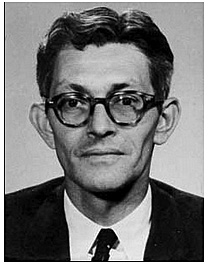
Angleton, like Golitsyn, was a brilliant intelligence officer, a man of photographic memory and superior deductions and intellect. He was also a dedicated spy hunter and an American patriot. But he had a serious flaw, a personal flaw that should have been detected by the CIA chiefs years before. Angleton had been deeply hurt psychologically and emotionally by the betrayal of his friend and colleague, the communist British traitor Kim Philby (1912-1988).
Psychologically, Angleton never got over his friend’s betrayal, and perhaps because of this psychological wound and the guilt associated with his professional failure to detect that personal and ideological betrayal, the counterintelligence chief saw Soviet spies where there were only shadows, and deduced the existence of complex, long-term deception where there were only coincidences, incompetence, and outright errors made by his adversaries.
Angleton shared Golitsyn’s belief in the near omnipotence of the Soviet KGBand far overestimated its capability for mounting strategic long-term deception against the U.S. and the West. Both men were convinced that Soviet spies were everywhere, infiltrating, deceiving, and stealing the secrets of the CIA and other Western intelligence services. Spy hunting became an obsession in a “wilderness of mirrors,” and thus the CIA, during the 1960s and 1970s was immersed in turmoil, becoming irresolute and utterly ineffective.
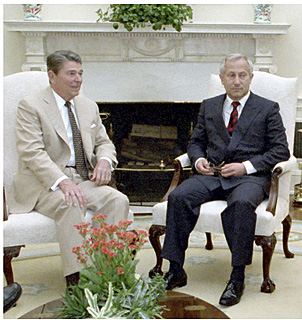
The Sino-Soviet split, which Golitsyn believed was strategic deception, was real and exploitable. In this instance, Golitsyn was correctly believed to be wrong and the Nixon administration (1968-1974) took advantage of this to deepen the rift between the Soviets and the communist Chinese. But in many other fronts, the Soviet KGB was gaining ground over the American CIA and the British MI6. The hunt for the nonexistent CIA mole continued. During the administration of President Gerald Ford (1974-1976), Angleton was finally dismissed (1977), but that was not the end of the troubles for the agency. Additional damage was done to the intelligence and spy detection capabilities of the CIA by the various congressional investigative committees and the veritable political persecution of the agency during the administration of President Jimmy Carter and the tenure of his CIA Director Stansfield Turner (1977-1981). The CIA did not recover until its revamping during the administration of President Ronald Reagan and his CIA Director William J. “Bill” Casey (1913-1987; Director of the CIA, 1981-1987) a decade later in the 1980s.
In the 1960s Golitsyn had helped uncover a number of Soviet agents that had infiltrated Western governments and had provided a cornucopia of intelligence extremely valuable to the CIA, but by the 1970s, the defector’s intelligence was no longer timely. Yet Golitsyn wanted to remain the star defector, so he began to deduce information based on global political assessments and analyses of more current events. With great confidence Golitsyn continued to warn about the infiltration of the CIA by a deep cover Soviet mole; insisted that he was the last true defector and those who followed him were dangles and double agents sent by the KGB to deceive the CIA; insisted that the Sino-Soviet split (1960-1989) was long-term deception; and later asserted that even the collapse of Soviet communism (1989-1991) was not real but more disinformation and long-term deception.
Golitsyn thought he could distinguish between true Soviet intent and disinformation, as the wheat is separated from the chaff, and break through and unravel Soviet long-term strategic deception to conquer the West. But what he was now providing was not intelligence, but erroneous analyses based on circumstantial intelligence and his own developing political beliefs as they formed while living in the West, instead of timely, human intelligence as he had obtained while operating within the Soviet bloc as a KGB officer.
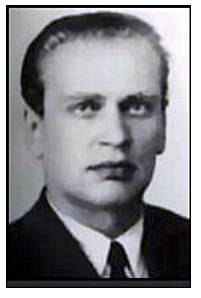
Golitsyn’s supporters in the CIA believed his deductions to be accurate. Most damaging of all, a slate of Russian patriots, legitimate Soviet KGB defectors, were thought to be “dangles,” false defectors, Soviet double agents. It took years, veritably until after the collapse of the Soviet Empire, to ascertain the bonafides of these Russian-American patriots, such as (and most importantly), Yuri Nosenko (1927-2008). For Angleton there had only been one true defector, Anatoliy Golitsyn, who understood the world of Soviet deception. All other defectors were considered double agents or dangles sent by the Soviets in their grand design to deceive the West. In the world of counterintelligence — that “wilderness of mirrors” in which one was at a loss to identify and separate the true legitimate spy from the “dangle” and double agent — no one was to be trusted. The additional problem was that Yuri Nosenko was not as smart as he was expected to be by the CIA stalwarts, and he did not possess an incredible memory like Anatoliy Golitsyn. This was enough for James Jesus Angleton to doubt his legitimacy as a true defector. Accordingly, Nosenko was interrogated, kept isolated, and incarcerated for years, treated as a double agent.

Even the great heroes, General Dimitri Polyakov (“Top Hat”), Oleg Gordievsky, and Col. Oleg Penkovsky came under suspicion as possible double agents, but they were all genuine defectors, American heroes who helped the West immensely. Some doubts still remain about the mysterious FBI agent ”Fedora.” These men risked life and limb for the cause of the United States and the West. Gen. Polyakov and Col. Penkovsky paid with torture and execution. All of these Soviet defectors not only helped the West, but also assisted their motherland, Russia, by helping to bring about the freedom that Russia enjoys today.
As if this turmoil in the CIA was not enough, the world situation left a lot to be desired. Below is how I summed up the CIA and world situation during those years of political turmoil in a critical review of the book, Farewell: The Greatest Spy of the Twentieth Century by Sergei Kostin and Eric Raynaud (2011):
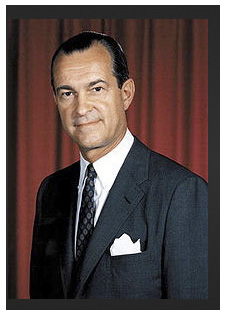
From 1972 to 1973, the Watergate scandal rocked the U.S. government and shook the American nation and by 1973, America had lost the Vietnam War. President Richard Nixon resigned but not before he fired Richard Helms (1913-2002), the veteran spymaster and head of the CIA (Director, 1966-1973), “the man who kept the secrets.” CIA counterintelligence (CI) had been severely hampered during this time because of the prevailing culture of paranoia engendered by the unproductive search for the mole “Sasha,” and in December 1974, CI chief James Jesus Angleton (1917-1987) was dismissed by William Colby (CIA Director, 1973-1976). To add insult to injury, in 1975 during the presidency of Gerald Ford (1973-1977), the CIA was investigated by the Rockefeller Commission and then battered by the hostile congressional investigation headed by Senator Frank Church (1924-1984). The CIA was accused of violating its charter, conducting domestic surveillance of U.S. citizens, and sanctioning assassinations in the 1960s and early 1970s. The Church Committee had indeed come dangerously close to dismantling the operational and intelligence gathering capabilities of the CIA.
Under Admiral Stansfield Turner (CIA Director, 1977-1981) during the presidency of Jimmy Carter (U.S. President, 1977-1981), the CIA suffered even more serious setbacks, including drastic cutbacks in personnel (e.g., 820 clandestine CIA officers were dismissed in the so-called “Halloween massacre” of 1977). Its powers were severely trimmed so that the agency was virtually de-fanged in intelligence and counterintelligence (CI) capabilities. As a result, America was to suffer humiliations and defeats unparalleled in her history. The Soviets and their surrogate warriors, the Cubans, were playing for high stakes. Like toppling dominoes, country after country on three continents fell prey to communism and revolution: Ethiopia fell to the communists (1973) and the revered King of the Ethiopians, Haile Selassie I, was deposed and assassinated; Mozambique (1975) and Angola (1976) also fell followed by civil wars; the Sandinistas, backed by the Cubans and Soviets, took Nicaragua in 1979; the Russians invaded Afghanistan and murdered its president, turning the country into a puppet nation and its mountainous terrain into Russian killing fields; the Shah of Iran, Muhammad Reza Pahlavi, fell from power in the Iranian Revolution led by the Ayatollah Khomeini, and fled his country; finally, the economic problems facing the U.S., on top of the Iran hostage crisis (1979-1980) and the failed Carter helicopter desert mission to rescue the American hostages, triggered a complete and general demoralization of the United States. President Carter called it a “general malaise.”
One important author who took the side of Angleton and Golitsyn in this affair is a man who I admire greatly because his outstanding skills, not only as an investigative journalist but also because of the logical approach and eloquence of his narrative as a writer. This author is Edward J. Epstein whose books are always fascinating and elucidating — as with his tomes, Legend: The Secret World of Lee Harvey Oswald (1978) and Dossier: The Secret History of Armand Hammer (1996). Epstein repeats his superb performance in a book in which he stands by Golitsyn in general and Angleton in particular. This book is Deception: The Invisible War Between the CIA and the KGB (1989), which is still a must read book for spy aficionados as well as scholars from both espionage and historical perspectives, even though some of the conclusions Epstein reaches have been found to be erroneous as newer information is obtained with the passage of time.
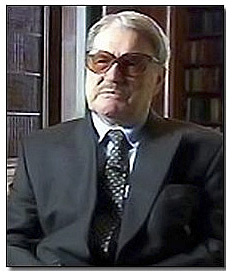
With the fabulous revelations of that great Russian, Vasili Mitrokhin, the KGB defector who brought with him the family jewels of the KGB’s First Chief Directorate (foreign intelligence secrets) and his cooperation with British historian, Christopher Andrew, treasure troves of materials have been uncovered and studied. Many of the traitors and double agents from the labyrinthine wilderness of mirrors have been exposed, and many mysteries from the Cold War solved.
The truth is that the KGB’s Chief Directorate was a powerful foreign intelligence agency, but not omnipotent or omniscient, despite tremendous power and resources given it by the Soviet empire, resources and power that dwarfed those of the CIA. The police state Directorates were overburdened with corruption and failures, not to mention the immorality of the Soviet system and its communist leadership, rotting from the top. It could not carry on the grand design of deception that KGB chief Alexander Shelepin (1958-1961) envisioned, and that the Soviet premier defector, Anatoliy Golitsyn, believed was firmly in place as Soviet policy in the 1960s-1980s. Disinformation, betrayals, double agents, “Trust” operations, “dangles,” yes, they were all part of the great game, but a grand design of long-term deception that included a series of false defectors (double agents), no; a faked Sino-Soviet split, no; a feigned collapse of the Soviet empire and its satellites, no. Such planning and grand design were not, could not be, implemented — instead the Soviet Empire collapsed.
It took me years of studying and reading dozens of books to convince myself of the fact that Golitsyn’s and Angleton’s deductions in this case were incorrect and that in three other major assessments (discussed above) Golitsyn’s conclusions were wrong.
Unless one reads all three of Christopher Andrews’ books with the great KGB defectors Oleg Gordievsky and Vasili Mitrokhin, one does not begin to understand Soviet espionage. Mitrokhin essentially brought the entire file of the KGB First Chief Directorate to London (i.e., files recording all major agents and operations from the inception of Soviet foreign intelligence up to the year 1984). The Mitrokhin papers were so extensive that they are referred to as the Mitrokhin Archives. (See Espionage and Cold War section in Great Books) You could say that the “KGB’s own sword had been used to pierce its very shield” in the hands of KGB defector Mitrokhin, whose recorded intelligence severed the Gordian knot of Soviet secrets and exposed the truth in an incredible number of cases.
Besides Gordievsky, Mitrokhin and other valiant Soviet defectors, the U.S. also had an American, a deep undercover agent, working for the FBI, who for many years sat with the top Kremlin leadership, a man who had known Lenin personally, and who was invited to attend discussions held by the Soviet leaders through the time of Khrushchev, Brezhnev, and Andropov, sitting with them as an honorary Bolshevik — Agent Solo, reporting everything to J. Edgar Hoover and the American presidents! (See Operation Solo — The FBI’s Man in the Kremlin by John Barron [1996] in Great Books.)
Thus, we now have multiple confirmatory evidence illuminating the scope of Soviet power, the truth about the wilderness of mirrors and what Soviet espionage really accomplished and did not accomplish. (See Espionage and Cold War section in Great Books.)
Epilogue
In conclusion I’m not denying that a grand design of long-term deception against the West ever existed in the minds and actions of the KGB and Soviet leadership. In fact, the concept may have been applied and carried out at various stages and strategic points, when the USSR was in need of deception to bolster its flagging economy and in need of economic assistance from the West — in the framework that Golitsyn described in his books, New Lies for Old (1984) and The Perestroika Deception (1995). The grand design of deception was probably ready for implementation at the behest of the young, innovative head of the KGB, Alexander Shelepin (1918-1994; head of the KGB, 1958-1961) — just about the time that Golitsyn could have been directly involved and on his way to Finland. This timing explains why Golitsyn was privy to it. Premiers Nikita Khrushchev and Leonid Brezhnev both instituted their deceptive periods of glasnost and perestroika, before those terms had even been divulged to the world. Khrushchev with his denunciation of the cult of personality of Stalin and his program of peaceful coexistence with the West, and Brezhnev with his policy of détente and his many photo sessions and much wining and dining with President Richard Nixon! All the time, the Cold War continued worldwide unrelenting.
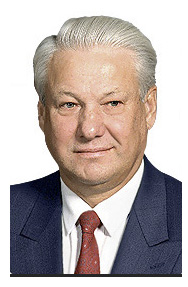
It was finally Soviet leader Mikhail Gorbachev (1931- ; head of the Communist party, 1985 -1991), who popularized glasnost and perestroika in the Soviet’s final attempt to deceive the West, while propping up and trying to keep the collapsing communist regime afloat — but things went terribly wrong. Gorbachev wanted to reform communism/socialism, not destroy it. In fact, the cooperative Secretary later claimed he wanted to follow the European socialist democracy model, as has just been applied in Spain with the repeated re-elections of the socialist government of Felipe Gonzalez. In fact, Gorbachev remained General Secretary of the Communist Party of the USSR until its dissolution in 1991. The cataclysmic problem for the Soviet leadership was that the desperate gamble they took was of such a degree that once put into effect, with the new openness and the taste of freedom that entailed, the cat was out of the bag, and there was no turning back!
Boris Yeltsin (1931-2008; first President of Russia, 1991-1999) was the real hero, the Russian patriot who stood on the tanks during the crisis — the attempted communist coup of 1991. Yeltsin fearless, and defiant would not allow the return of Russia to communism — and the evil empire gasped its last breath. Alas, Yeltsin was criticized and taken to task by the Russian people for accelerating the process of Soviet dissolution and democratization at the expense of causing temporary hardship and misery. It has been forgotten that he played the pivotal role in giving Soviet totalitarianism the coup de grace. Yeltsin has still not received the proper credit he deserves for bringing peace, freedom, self-government, and eventually prosperity to the Russian people since time immemorial.
Written by Dr. Miguel Faria
Miguel A. Faria Jr., M.D. is the author of Cuba in Revolution – Escape from a Lost Paradise (2002) and the essays, “Stalin’s Mysterious Death” (2011), “Stalin, Communists and Fatal Statistics (2011), The Political Spectrum: The Totalitarian Left from Communism to Social Democracy to the Extreme Right, Anarchism (2011). His website is haciendapub.com.
This article may be cited as: Faria MA. Anatoliy Golitsyn, James Jesus Angleton, and double agents in the wilderness of mirrors of the Cold War. HaciendaPublishing.com, August 24, 2016. Available from: https://www.haciendapublishing.com/articles/anatoliy-golitsyn-james-jesus-angleton-and-double-agents-wilderness-mirrors-cold-war
Copyright ©2016 Miguel A. Faria, Jr., M.D.
This article was selected for publication and also posted at realclearhistory.com, September 2016.
1 thought on “Anatoliy Golitsyn, James Jesus Angleton, and double agents in the wilderness of mirrors of the Cold War by Miguel A. Faria, MD”
This article deciphers the wilderness of mirrors and is one of my favorites. corroboration can be found in the fantastic Mitrokhin Archives, the intelligence hoard of the century!